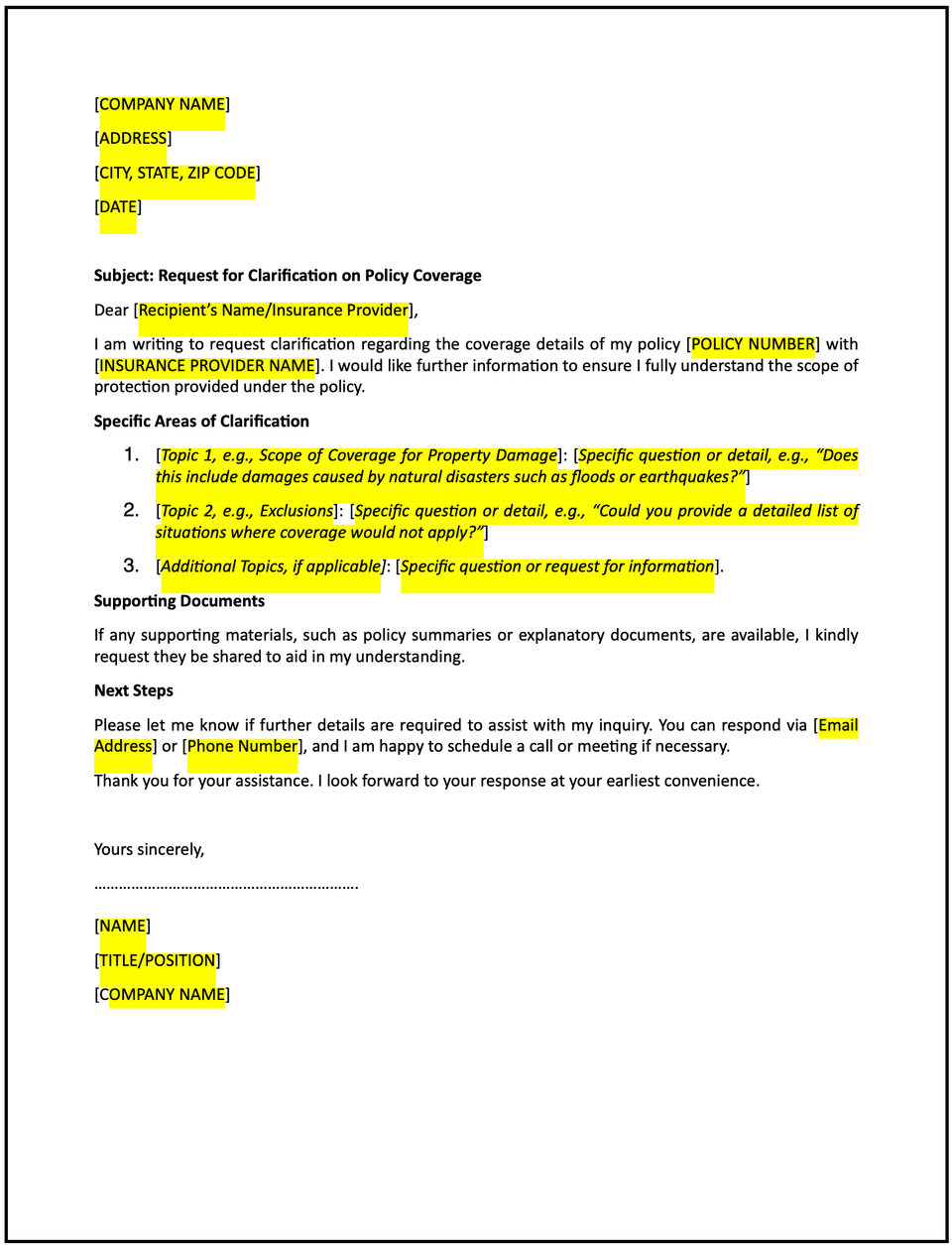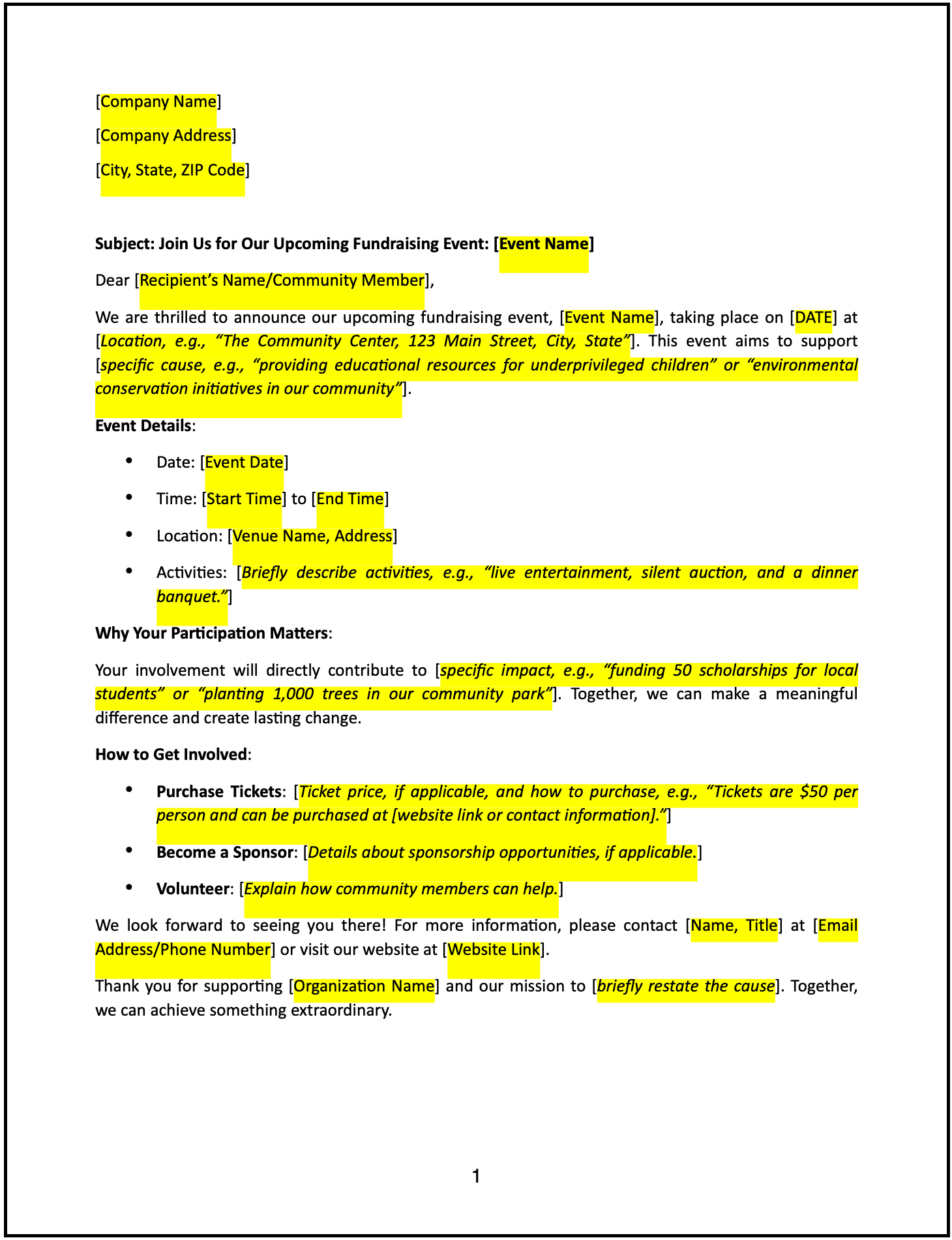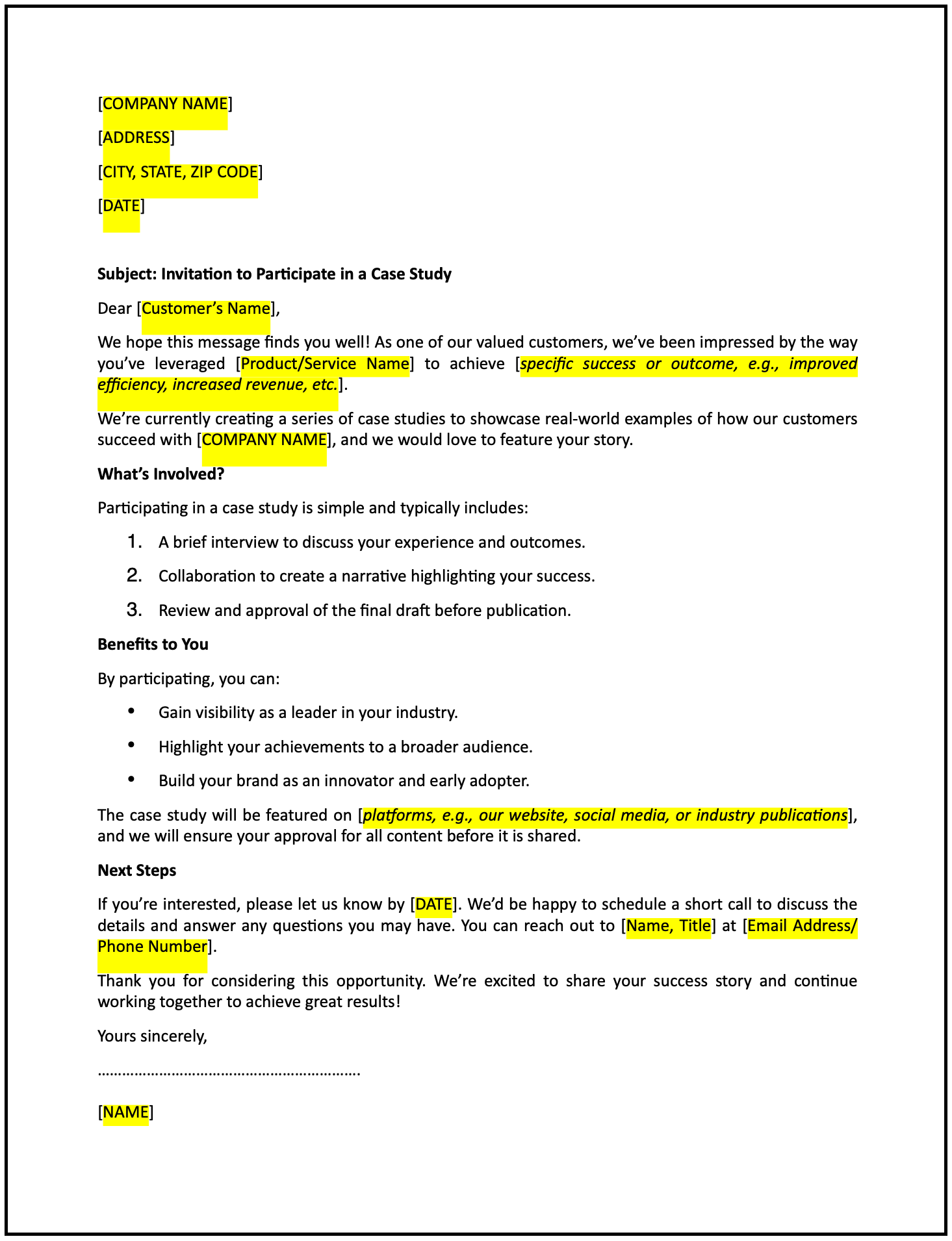Request for clarification on policy coverage letter: Free template

Request for clarification on policy coverage letter
A request for clarification on policy coverage letter is a formal communication used to seek detailed information about specific terms, conditions, or scenarios covered under an insurance policy. This letter ensures a clear understanding of the policy’s provisions to help policyholders make informed decisions or address concerns.
How to use this request for clarification on policy coverage letter
- Open with an introduction: Address the recipient respectfully and reference your policy number or account details.
- State the purpose: Clearly communicate your intent to seek clarification regarding specific aspects of the policy coverage.
- Specify the details: Highlight the specific clauses, scenarios, or provisions you need further information about.
- Provide context: Briefly explain why the clarification is important, such as planning for a specific event, verifying coverage for a situation, or understanding exclusions.
- Request a response: Politely ask the recipient to provide detailed information or examples to clarify the policy’s terms.
- Offer collaboration: Indicate your willingness to provide additional information or discuss the matter further if needed.
- Maintain a professional tone: Ensure the letter is clear, respectful, and focused on resolving any ambiguities.
- Provide contact information: Include details for the recipient to respond or reach out for further clarification.
Benefits of using a request for clarification on policy coverage letter
This letter ensures a structured and professional way to address uncertainties while fostering transparency and understanding. Here’s how it helps:
- Promotes clarity: Requesting specific information ensures a clear understanding of policy terms.
- Reflects professionalism: A well-crafted letter demonstrates respect and attention to detail.
- Prevents misunderstandings: Addressing ambiguities early helps avoid conflicts during claims or events.
- Supports informed decisions: Understanding coverage details allows for better planning and risk management.
- Builds trust: Open communication fosters a positive relationship with the insurance provider.
Tips for writing an effective request for clarification on policy coverage letter
- Be specific: Clearly identify the policy and the areas where clarification is needed, referencing clauses or terms.
- Use professional language: Maintain a respectful and concise tone to foster collaboration.
- Provide context: Briefly explain why the clarification is necessary and how it supports your needs.
- Highlight mutual benefits: Emphasize how providing clarity helps both the policyholder and the insurer align expectations.
- Include actionable steps: Share clear instructions for responding, such as providing examples or scheduling a discussion.
- Keep it concise: Focus on the essential points while ensuring the tone is professional and engaging.
Frequently asked questions (FAQs)
Q: What details should I include in this letter?
A: Include your policy number, specific clauses or terms needing clarification, and a brief explanation of why the information is needed.
Q: Should I personalize the letter?
A: Yes, addressing the insurance representative or policy administrator by name demonstrates attentiveness and professionalism.
Q: Who typically sends this letter?
A: Policyholders, risk managers, or business owners typically send this letter.
Q: How formal should this letter be?
A: The tone should be professional, respectful, and focused on fostering transparency and resolution.
Q: When should this letter be sent?
A: Send the letter as soon as clarification is needed to avoid potential issues or delays.
Q: Can this letter request examples of coverage scenarios?
A: Yes, requesting specific examples can help clarify how the policy applies in practical situations.
Q: Is acknowledgment from the recipient required?
A: While not mandatory, requesting acknowledgment ensures your request is being addressed.
This article contains general legal information and does not contain legal advice. Cobrief is not a law firm or a substitute for an attorney or law firm. The law is complex and changes often. For legal advice, please ask a lawyer.


